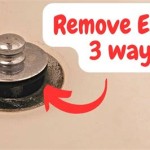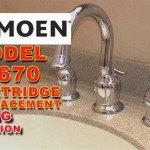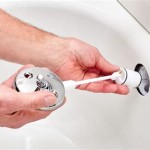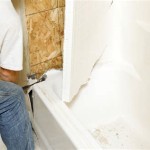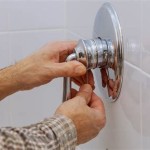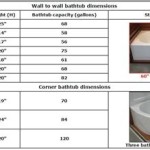How to Unclog a Bathtub Filled with Water and Soap Solution
A clogged bathtub filled with soapy water presents a more challenging plumbing issue than a simple drain blockage. The standing water prevents easy access to the drain and the soap suds can interfere with some unclogging methods. However, with the right approach, this problem can be effectively addressed.
Assessing the Situation
Before attempting any unclogging method, it is crucial to assess the situation. This involves determining the potential cause of the clog, the severity of the blockage, and gathering the necessary tools. This preliminary step ensures the chosen method is both effective and safe.
Removing the Standing Water
The first step in unclogging a bathtub filled with soapy water is to remove the standing water. This can be accomplished in several ways:
- Using a bucket: This is the most straightforward method, although it can be time-consuming, especially with a large volume of water. Carefully scoop the water into a bucket and dispose of it in a toilet or sink.
- Using a wet/dry vacuum: A wet/dry vacuum is a more efficient way to remove the standing water. Ensure the vacuum is set to the "wet" setting before use.
- Siphoning: Siphoning can be effective if you have a hose long enough to reach a lower drain or outside area. Submerge the hose completely in the tub water, then seal one end and quickly lower it to the discharge point. Gravity will force the water out.
Manual Removal Techniques
Once the majority of the water is removed, manual removal techniques can be attempted. These are often effective for hair clogs or minor blockages:
- Using a drain snake (plumber's snake): Insert the drain snake into the drain opening and rotate it clockwise. This action will either break up the clog or allow you to pull it out.
- Using a bent wire hanger: Straighten a wire coat hanger and bend one end to create a small hook. Use this hook to retrieve hair and other debris from the drain.
Natural Drain Cleaning Solutions
Natural drain cleaning solutions can be effective for dissolving soap scum and other organic matter contributing to the clog. These solutions are often less harsh on pipes than chemical drain cleaners.
- Baking soda and vinegar: Pour one cup of baking soda down the drain, followed by one cup of vinegar. Cover the drain and let the mixture fizz for 30 minutes before flushing with hot water.
- Boiling water: Carefully pour a pot of boiling water down the drain. The heat can melt soap scum and grease, helping to clear the blockage. This method is most effective for minor clogs.
Chemical Drain Cleaners
Chemical drain cleaners should be used as a last resort due to their potential to damage pipes and create hazardous fumes. If using a chemical drain cleaner, always follow the manufacturer's instructions carefully and ensure adequate ventilation.
- Selecting a drain cleaner: Choose a drain cleaner specifically designed for bathtubs and follow the instructions precisely. Avoid mixing different chemical drain cleaners.
- Safety precautions: Wear protective gloves and eye protection when using chemical drain cleaners. Avoid inhaling the fumes and ensure the area is well-ventilated.
Preventing Future Clogs
Preventing future clogs is essential for maintaining a functional and hygienic bathtub. Several preventative measures can significantly reduce the likelihood of recurring blockages:
- Hair strainer: Install a hair strainer over the drain to catch hair and other debris before it enters the drain.
- Regular cleaning: Flush the drain with hot water after each bath or shower to prevent soap scum and hair buildup.
- Avoid pouring grease down the drain: Grease solidifies in pipes and contributes to clogs. Dispose of grease in a separate container.
When to Call a Plumber
If the clog persists after attempting these methods, it is recommended to call a professional plumber. A plumber has specialized tools and expertise to diagnose and resolve complex plumbing issues, potentially saving you time and preventing further damage.
- Persistent clogs: If the clog continues to reoccur despite your efforts, a plumber can identify the underlying issue.
- Severe blockages: For severe blockages that are unresponsive to DIY methods, a plumber may need to use specialized equipment.

How To Unclog A Bathtub Drain 11 Diy Clog Busters

How To Unclog A Bathtub Drain 11 Diy Clog Busters

How To Unclog A Bathtub Drain With Standing Water Naturally

Top 5 Tips On How To Unclog A Bathtub Drain Smiley Cleaning

How To Unclog A Bathtub Drain Homeserve Usa

How To Unclog A Bathtub Drain 11 Diy Clog Busters

Bathtub Won T Drain Here S What To Do Next

How To Unclog A Bathtub Mr Rooter Plumbing

How To Unclog A Slow Running Bathroom Sink Drain 10 Options

What To Do When Your Bathtub Is Clogged Drainpro
Related Posts

